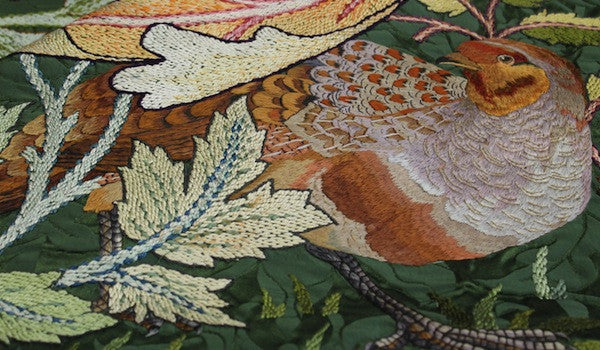
MORRIS MATTERS

Many crafters will often credit William Morris for lifting embroidery out of its homely confines in Britain during the 19th century, when in fact it was his daughter May Morris who too played a vital role in this artistic shift. While it can’t be denied that the famed textile designer and poet played a huge part in this history (and particularly in the arts and crafts movement), May was integral to eschewing in a new form of embroidery that soon became known as art needlework.

The Royal School of Art Needlework was set up in 1872, (now known as the renowned Royal School of Needlework in London’s Hampton Court Palace), and while William Morris was one of the first designers to ever be associated with this new educational establishment, May herself was especially active in it. Here, and during her work at the LCC Central School of Art, she developed her own art needlework by designing each of her embroidery patterns that were often filled with flowers, birds and biblical scenes.

Many might argue that this was in fact quite a radical act for an embroiderer at the time. May pushed against convention by straying away from the universally used instructional embroidery kits and preconceived designs invented by third parties, instead opting to use this traditional hand-embroidery technique in a new, free-flowing and independent practice. This was a far cry from the norms of homely embroidery during the late 19th century, and no doubt lay the foundation for many more artistic embroiderers to come.

May Morris: Art & Life is a comprehensive exhibition of May's work that will be held in the William Morris Gallery in London later this year. The show's organisers are crowd-funding in order to make this the most comprehensive show of May's work. To find out more about the campaign, click here.
Click here to buy tickets to a private view of the exhibition on 19 October.
